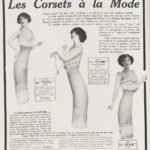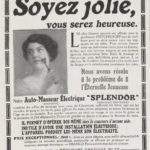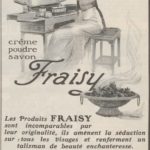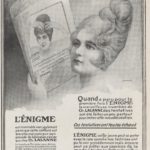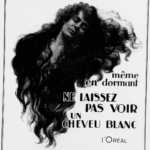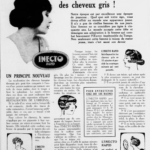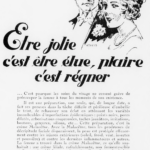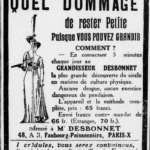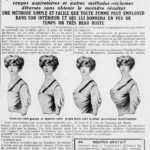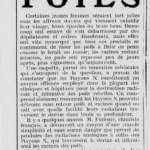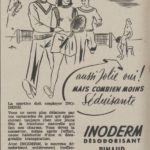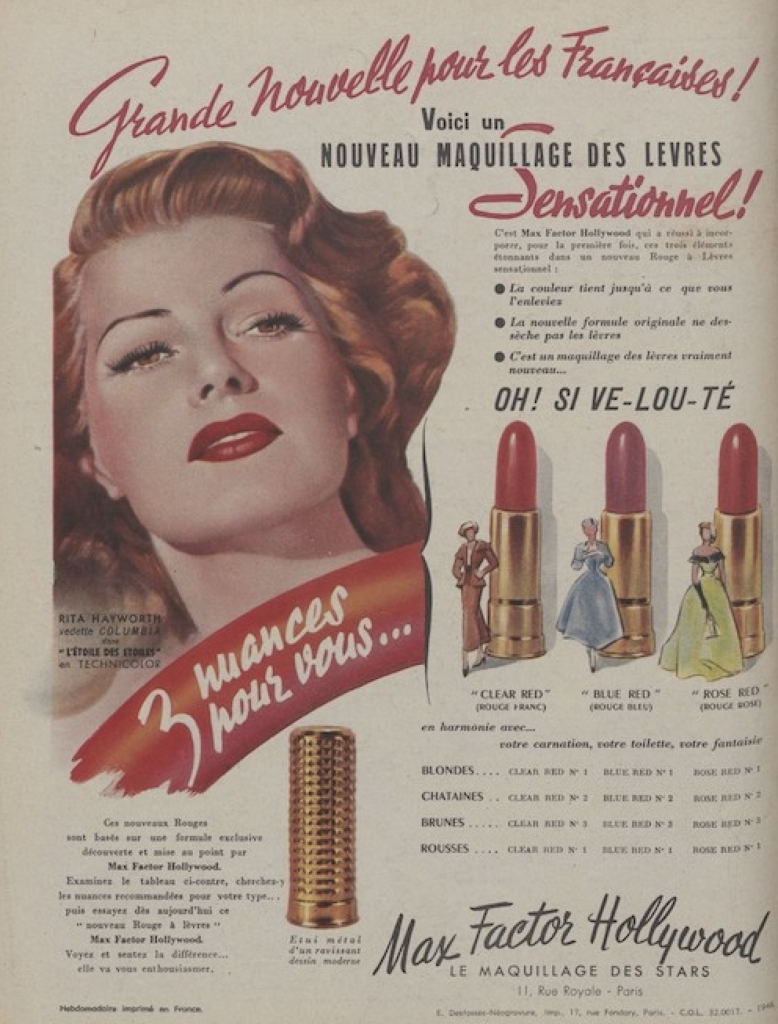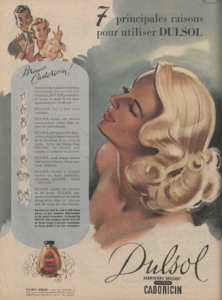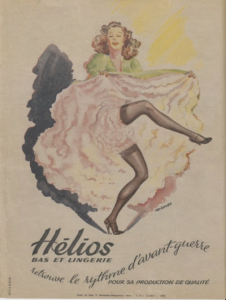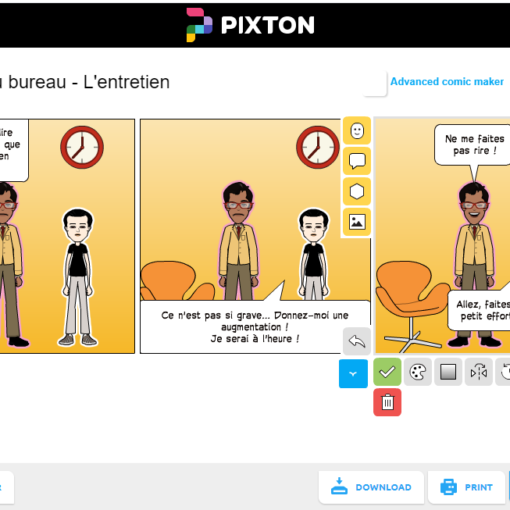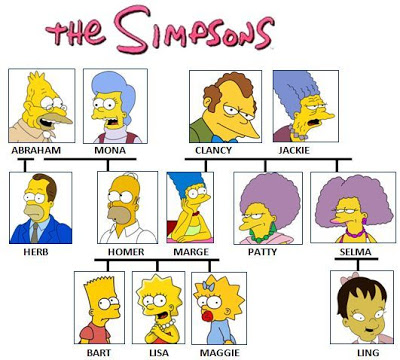The images advertising women’s beauty and care tell a cleverly designed story intertwining social norms of desire, intimacy, and gender. Examined diachronically, these images record the emergence of a modern understanding of self-fashioning entangled in growing consumerist expectations. I’ve become interested in these archival materials while researching the construction of gender in the French press. In class, discussing this type of images provides a space of interrogation in which students can put under scrutiny which bodies are idealized and which bodies are invisibilized in diverse historical and cultural contexts.
The following image galleries draw on the archive of three 20th-century women’s magazines (Fémina, La Vie Parisienne, and Elle), all available in the digital library Gallica. A close analysis of these images captures some major shifts and historical frames. The prompts, below, invite students to examine normative pressure upon women’s bodies in advertising. These image galleries have been designed for language through content courses. This being said, teasing out historical advertising is a productive activity that can be implemented in a broad range of courses, especially those addressing the relationship between social constructions of gender and socio-economic structures of power. This type of archival-based activity can also be implemented in a distanced learning environment.
Class Activity
By comparing two or more sets from different time periods, students engage with the changes that occurred in the constructed representation of women’s bodies and gender relations throughout the 20th century. Possible prompts include:
- What is the promise of these advertisements? What audience do they try to reach out to?
- How is the message conveyed (discursive, graphic, and visual cues)?
- How is the woman’s body represented? Moving, still? What facial expressions? Which kind of activities women are shown doing, if at all?
- In which ways men and gendered relationships are present/ed in these advertisements?
- What social expectations underpin these advertisements?
- By looking at these advertisements, what we can learn about the standards of beauty of each period?
- What brands do you recognize? How has their branding evolved?
- Would such an advertisement be possible today? Why, why not?
This set, below, comes from the illustrated magazine Femina at the end of the Belle Epoque (1910 to 1914):
This other set comes from the French illustrated magazine La Vie Parisienne, during the Années folles (1920s):
This last selection comes from Elle in the aftermath of the Second World War (1945 – 1949):
Follow-up Assignment or Student Project
- Design women’s care advertising;
- Create and present an image gallery of contemporary representations of the female body;
- Do research into a similar archive and present an analysis of an advertisement of their choice.
Readings.
Anne-Marie Lugan Dardigna (2019 [1974]) Femmes-femmes sur papier glacé. La presse « féminine », fonction idéologique, Paris, La Découverte, foreword by Mona Chollet.
Alain Geneste, Denis Perais, Elsa Tremel, Kahina Seghir, Olivier Moreau, Pauline Perrenot (2020) ‘Sois belle! Garde la ligne! Travaille! Eduque!’ Les injonctions assourdissantes des magazines féminins, Acrimed, Part 1 and Part 2.
More on Gallica.
The trove of French archives Gallica offers a broad selection of magazines for women ranging from the late 17th century to the mid-20th century. This rich archive provides materials to examine the representations of gender and of the woman body across the centuries. Publications cover a broad range of topics: fashion, motherhood, leisure, domesticity, consumerism, celebrity culture, social norms of beauty and conduct, emancipation and romantic relationships, as well as women’s resistance during WWII.


